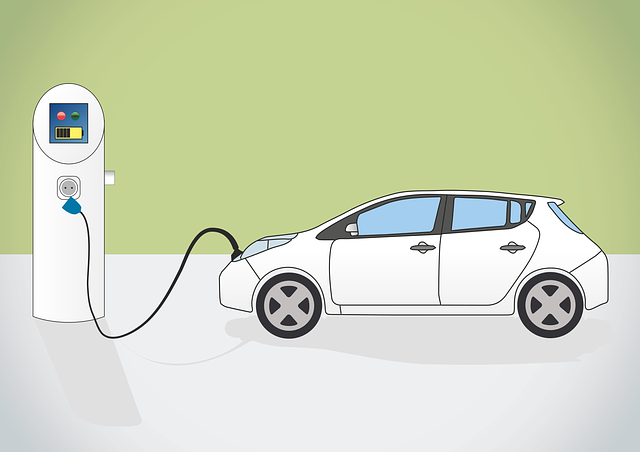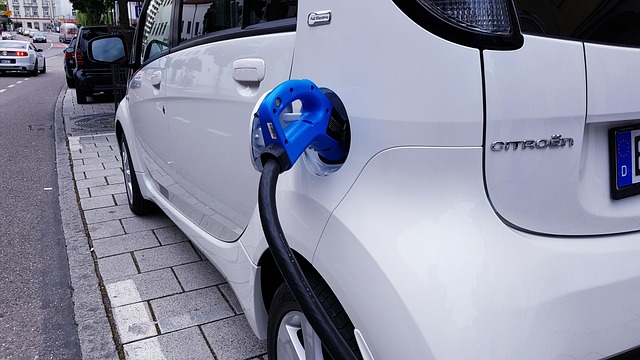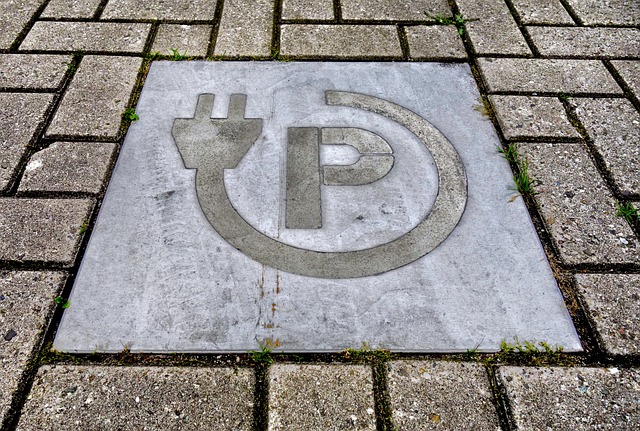Selecting the right EV charging stations involves understanding key components like power sources (AC vs DC), connectors, cables, and controllers. Efficient network management requires mapping infrastructure using software. Regular cleaning, inspection, and software updates are vital for optimal performance and security. Consider stations with built-in payment options and OTA update capabilities for a seamless user experience. Strategically place stations in high-traffic areas, ensuring accessibility, lighting, and clear markings, while integrating EV charging apps to streamline the process and gather usage data.
As electric vehicles (EVs) gain popularity, ensuring proper charging station maintenance is crucial. This guide provides essential tips for maintaining select EV charging stations, covering components, cleaning, software updates, battery health, power supply management, and optimal location strategies. By following these practices, you can enhance the efficiency and longevity of your charging infrastructure, catering to the growing needs of EV owners who rely on accessible and well-maintained stations.
- Understanding EV Charging Station Components
- Regular Cleaning and Inspection Procedures
- Checking for Software Updates
- Battery Maintenance Considerations
- Managing Power Supply and Cable Condition
- Optimizing Location and Accessibility for Efficient Maintenance
Understanding EV Charging Station Components

Charging an electric vehicle (EV) involves a network of components working together seamlessly. When selecting EV charging stations for your location, understanding these parts is crucial. The process begins with the power source, which can be either AC (alternating current) or DC (direct current). AC chargers convert the power from the grid to the appropriate voltage for EVs, while DC fast chargers use direct current, offering quicker charging times.
These stations include various components such as connectors, cables, and controllers. Connectors facilitate the physical connection between the vehicle and the charging station, ensuring proper data and power transfer. Cables carry the electrical energy from the station to the car, while controllers manage the charging process, monitoring voltage, current, and temperature to guarantee a safe and efficient charge. Additionally, EV charging equipment suppliers often provide stations with payment options integrated into their systems, enhancing user experience via digital payments or membership programs. Efficiently mapping this ev charging infrastructure using software can further streamline the network management for both operators and users.
Regular Cleaning and Inspection Procedures

Regular cleaning and inspection procedures are vital for maintaining optimal performance of EV charging stations. Visible areas should be wiped down with a soft cloth to remove dirt, dust, or any debris that might accumulate over time. This includes the charging ports, panels, and any touchscreens or payment systems integrated into the station. Regular inspections should also focus on checking for signs of damage, corrosion, or loose connections, especially in more exposed outdoor locations.
When selecting EV charging stations, it’s important to consider those with built-in payment options for a seamless experience, as these require less manual intervention. For instance, many modern stations support various ev charging apps for Android, allowing users to pay and manage their charging sessions remotely. Reputable ev charging equipment suppliers offer a range of solutions catering to different needs, from residential to commercial settings. Regular maintenance not only ensures the longevity of these stations but also enhances user experience by providing reliable and efficient charging facilities.
Checking for Software Updates

Regular software updates are crucial for maintaining optimal performance and security of EV charging stations, especially as technology evolves rapidly. Property owners or managers should ensure that they select EV charging stations that offer over-the-air (OTA) updates, allowing remote installation of new features and bug fixes. This process streamlines maintenance and reduces the need for on-site visits, saving time and resources.
When considering DC fast charging vs AC charging, it’s essential to update the software to support the latest charging standards. Staying aligned with electric vehicle (EV) charging standards ensures compatibility with a wide range of vehicles and keeps the charging infrastructure up-to-date. Regular updates can also enhance user experience by improving connectivity, allowing for better tracking of energy consumption, and providing real-time notifications about station status, making it easier for users to find public EV chargers when needed.
Battery Maintenance Considerations

Battery maintenance is a crucial aspect when it comes to selecting and maintaining EV charging stations. As electric vehicles gain popularity, ensuring the longevity and health of their batteries becomes increasingly important. Regular cleaning and inspection are key; this involves removing any debris or corrosion from the battery terminals and checking for signs of damage or wear. Using the correct charging equipment is also vital. When installing EV charging stations, it’s essential to choose those that are designed to cater to different battery types and sizes, ensuring optimal charging efficiency while minimizing potential strain on the vehicle’s power source.
Moreover, maintaining a consistent charging routine can significantly impact battery health. This includes avoiding extreme temperature conditions during charging, as heat can accelerate battery degradation. Opting for slow charging when possible is beneficial; it reduces the stress on batteries and helps maintain their overall performance. Considering the EV charging accessibility for disabled drivers is another important factor; ensuring that stations are installed in easily accessible locations with appropriate height adjustments to cater to all users.
Managing Power Supply and Cable Condition

Managing the power supply and maintaining the condition of cables are essential aspects of EV charging station maintenance. When selecting EV charging stations, it’s crucial to consider their compatibility with various vehicle models and charging standards. This ensures that the stations can cater to a wide range of electric vehicles, enhancing accessibility for users. Moreover, focusing on reliable power supply sources is vital to prevent disruptions during charging sessions. Many modern charging stations come equipped with advanced monitoring systems that track energy usage, allowing facility managers to optimize power distribution efficiently.
Regular checks and maintenance of cables are equally important. Cables subjected to frequent use can degrade over time, compromising charging speed and safety. It’s advisable to inspect them for signs of wear, damage, or fraying. Using EV charging apps for iPhone or other devices to locate public chargers nearby can help users find well-maintained stations, ensuring a seamless and efficient charging experience. Maintaining optimal cable condition contributes to evoking the desired level of charging efficiency and power delivery.
Optimizing Location and Accessibility for Efficient Maintenance

When optimizing the location and accessibility of EV charging stations for efficient maintenance, it’s crucial to consider strategic placement that minimizes travel time and maximizes convenience for users. This involves selecting EV charging stations in high-traffic areas such as shopping centers, parking lots, and public transit hubs where electric vehicle (EV) owners are likely to frequent. Additionally, ensuring these stations are well-lit, clearly marked, and easily accessible can significantly enhance user experience and encourage broader adoption of EV technology.
By integrating EV charging stations with payment options and leveraging ev charging apps for iPhone, maintenance teams can streamline the process, reduce wait times, and gather valuable data on usage patterns. This data is invaluable for identifying peak demand periods, planning maintenance schedules accordingly, and ensuring that public where to find public EV chargers remain operational and reliable. Such strategic optimization not only enhances the efficiency of charging infrastructure but also contributes to a smoother transition towards sustainable transportation.
Proper maintenance of EV charging stations is key to ensuring their longevity, functionality, and user satisfaction. By understanding the various components, implementing regular cleaning and inspection routines, staying updated with software patches, and attending to battery health, you can significantly optimize the performance of your selected EV charging stations. Regular checks on power supply cables and strategic placement for easy accessibility further enhance efficient maintenance, ultimately contributing to a seamless electric vehicle charging experience.
